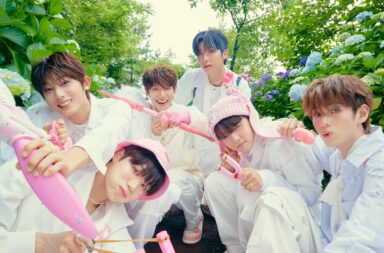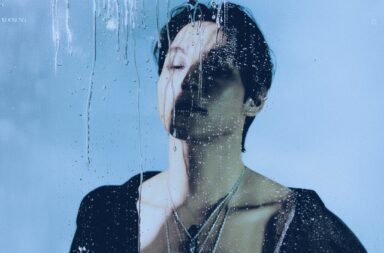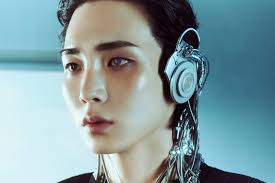If anyone knows anything about time—and its passing—it is Suho.
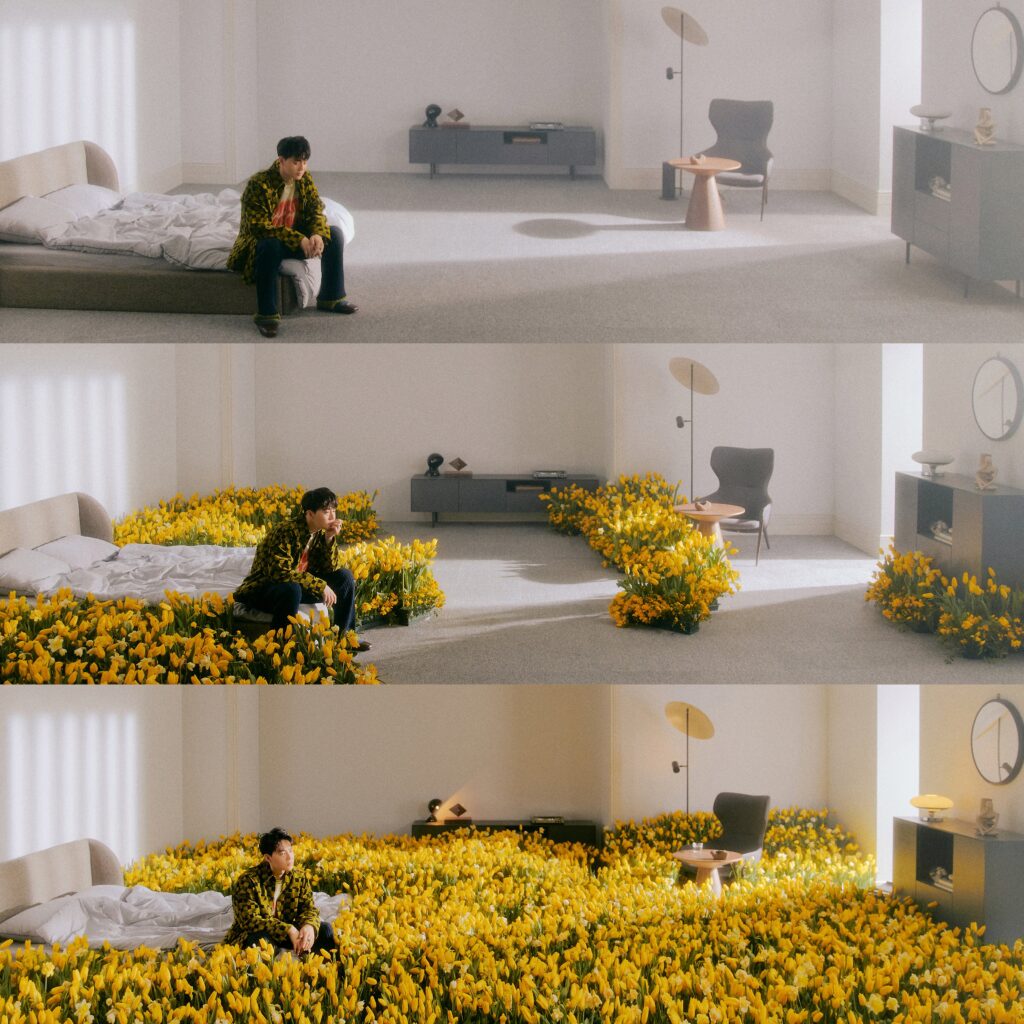
Two months ago, Suho completed his mandatory military service. Almost a year ago, he turned 30. Two years ago, the multi-hyphenate released his solo debut, Self-Portrait, on Vincent van Gogh’s birthday. Around the same time, the world shut down as the Covid-19 pandemic raged (and continues to rage). Ten years ago, Suho emerged as the leader of Exo, then fresh-faced rookies and now juggernauts as a band and soloists in their own respects.
Grey Suit, released on April 4, marks Suho’s return. Introspective songwriting and a soft rock foundation weaves together literary and visual inspiration to infuse color into the muted world around the seasoned artist.
To do so, Suho focuses on time, taking the joke, “time is just a concept” quite literally. In the six-track mini album, he settles into a storyteller role and captures the complex emotions that are rooted in having the days, the weeks, the months, the years pass by. Whether it is a story of sorrow and being rooted in place by a relationship long gone or one of comfort found after being searched for, Grey Suit recognizes the weight of time.
Suho’s latest project remains in the soft rock vein like where Self-Portrait is situated, but Grey Suit brings an entirely different feel. Part of the newness comes from the challenges presented and overcome in Grey Suit. This includes his experimentation with vocals, the overarching concept, and its various sonic textures. The six tracks paint with their own colors, ranging from the blank environment found in “Grey Suit” to the warm glow of “Morning Star.” While the colors evoked are different, they ensure that the album as a whole is a cohesive painting within itself.
Yet the important parts of Grey Suit tie it together with Self-Portrait, namely Suho’s lyricism. Credited on all the tracks under SH2O, art metaphors and cinematic writing help characterize his second solo album. This time, however, instead of looking inward, Suho explores the outside world and the art of change.
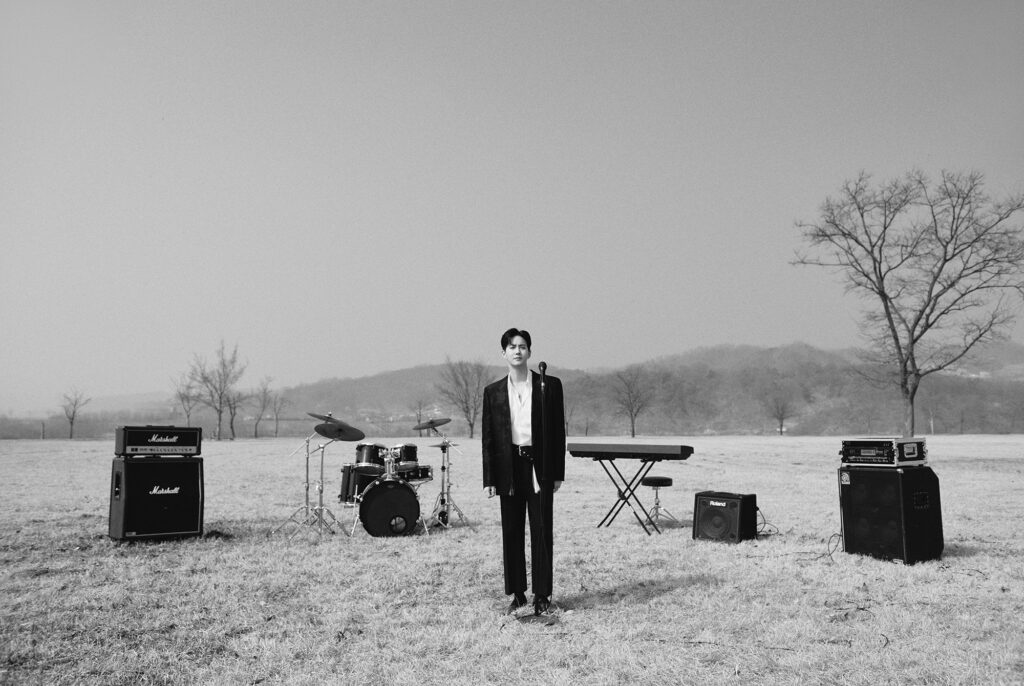
Grey Suit builds a journey of moving away from grey emptiness to discovering vibrant wholeness. The greyness of the world, the parts that beat us down, washes away as color bleeds life into, well, life. Suho immerses listeners in color, and, more specifically, his distinct colors by honing in on central images, which are often seemingly ordinary things.
The first is a grey suit. With its soft rock sound and its electric guitar, “Grey Suit” echoes “Let’s Love,” the title track of Self-Portrait, and threads them together. However, Suho’s growth in the past two years is clear in the depth of the lyrics as well as the clever connection between his affinity for color and the German novel Momo by Mchael Ende.
If “Grey Suit” were a color, it would be a blue grey that has a hidden warm undertone, depending on the lighting. Suho’s song is not so much as a reflection of the Men in Grey from Momo but more of an expression of what they represent. They drain the “color” in our lives, convincing us that the little moments of brightness are time-suckers and obstacles to achieving “efficiency.”
At the beginning of “Grey Suit,” Suho focuses on keywords such as “lukewarm,” “blank,” and “static” (“I can no longer move”). But as he struggles to break free of his grey memories and rediscovers the “you” who brings color to his life, the artist realizes that being “together again” yields “no more grey.”
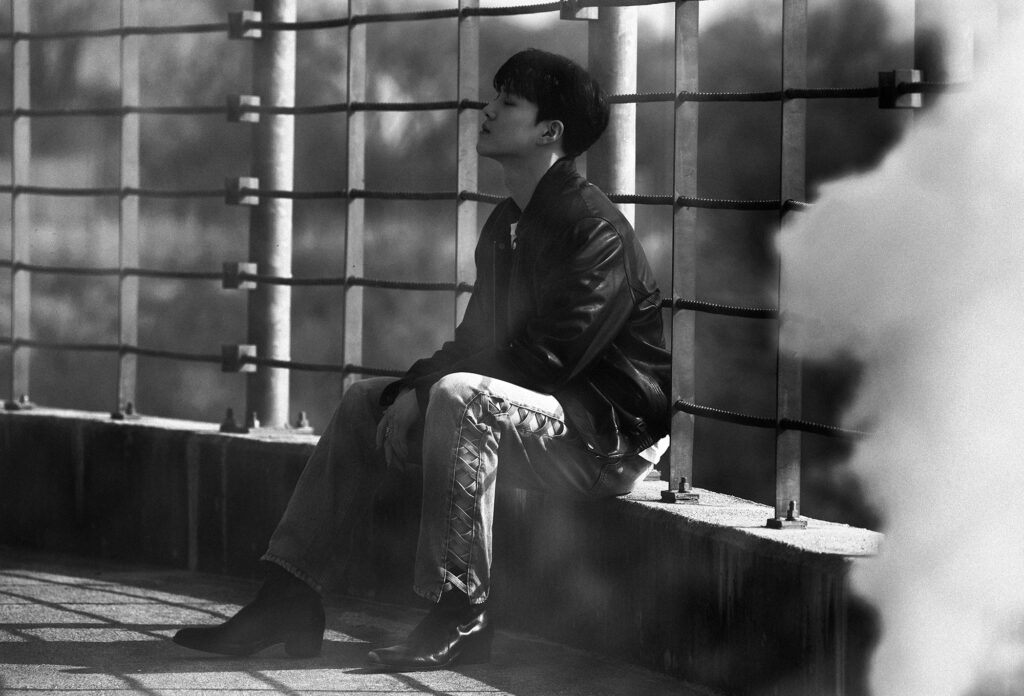
The reconnection found in “Grey Suit” strengthens the bridge it established with Momo. The novel’s titular character would talk with people in her town and slow down the fast pace of life in the process. The small girl focused on connecting with others and seeing them as human beings first, despite the Men in Grey’s determination to do the opposite.
“Grey Suit” draws on literary inspiration, while opening track “Morning Star” pulls in artistic inspiration often serving as foundation for Suho’s solo work. The gentle instrumentals establish a cinematic atmosphere, one bursting with possibility as a new day begins. Listeners know Suho is writing a new chapter, and they get to witness it in real time.
The sun rises on Grey Suit with “Morning Star,” and a golden glow casts it’s light on the track. It is fitting, then, that yellow tulips and daffodils are used in the concept photos for this album. Not only are flowers significant to Momo (hour-lilies store time, and the Men in Grey smoke cigars made from their dried petals to survive), but tulips represent perfect love while daffodils represent rebirth or new beginnings.
“Morning Star” is the first step towards that rebirth. Suho starts in the greyness “Grey Suit” explores. His words are extremely relatable as a world experiencing Covid-19, especially in the opening verse:
Keep this silence in my trapped dreams
The quietness continues
My silhouette in this hazy fog
A lot of this isn’t unfamiliar to me
Despite the “hazy fog,” Suho searches for more. When the instrumentals swell in the chorus, he sings, “I want more… / Waiting for the morning star.” His clear tenor also echoes with each turn of “I want more,” driving home the message. Listeners can imagine the sun slowly peeking over the horizon, and the sky blossoming with warm orange, dusty pinks, and bright gold.
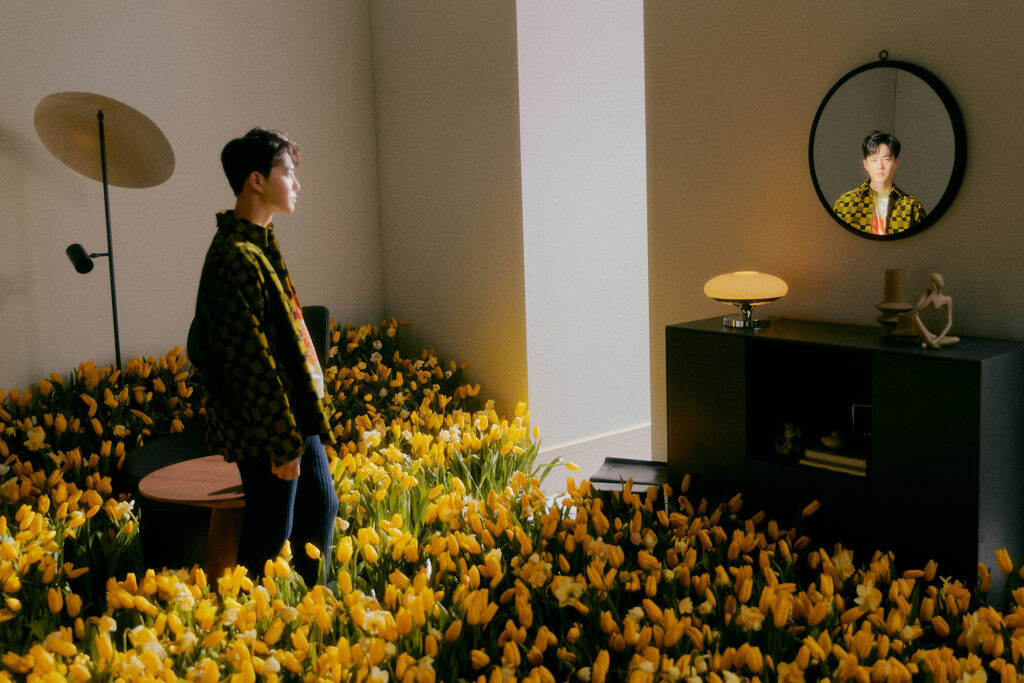
This track is a journey of “becoming anew.” The lyrics shift from “Oh, don’t wake me up” to “Oh, wake me up” by the final line. Suho’s dream might have been too good to be woken up from, but eventually, he is ready to make this beautiful dream a reality.
The last chapter, the last brushstroke of the Grey Suit painting, comes in the form of “Moment.” With “Morning Star,” the sun rises, and with “Moment,” the sun sets—an occasion of arriving at full circle. True to this image, the latter’s lyrics focus on the night and the moonlight.
Suho also goes back to his ballad roots here, although the resonant plucking of the traditional gayageum and the metronome effect gives “Moment” a distinct sound. This is a song for him and us: it holds a space for those looking for him, and holds a similar space for him to be. As Suho sings, “So that I can find it even if I get lost / I’ll leave a small light on tonight.” “Moment” is his little spot of bright warmth in the darkness, just like Momo in the world of the Men in Grey and the daffodils in the Grey Suit concept photos are lights of their own. Through “Moment,” Grey Suit is given a soft landing, a place to finally rest.

In contrast, “Hurdle” shows an experimental side of Suho the solo artist. The funky bassline and retro megaphone effect adds something new to his growing discography. These choices also work well with the central image of the track (a hurdle).
With the production capturing the attention from the get-go, it makes sense why the songwriting is more straightforward compared to some of the other songs in Grey Suit. Lyrics such as “I’m trapped in time endlessly for no reason / Even if it’s the same place, I’m running, running” and the refrain, “Love’s like a hurdle,” paint a narrative of Suho competing against love and time.
If “Hurdle” is the humorous side of Suho, “Decanting” enters a new sexy and seductive territory. Conjuring a scene of red wine slowly being poured into a decanter, the neo-soul track is sensuous through-and-through. Suho’s vocal texture fits perfectly, as he sometimes sings lines with his full voice and sometimes trails off, leaving listeners searching for more. A delicious, sleek guitar solo is the final drop in the glass of “Decanting.”
As to why Suho created a love song with wine as its metaphor, his interview with Rolling Stone might have an answer. He revealed soon after he was released from the military that he “started studying and drinking wine.” The multi-hyphenate continued, saying, “So someday, I want to make my own winery in Napa Valley.”
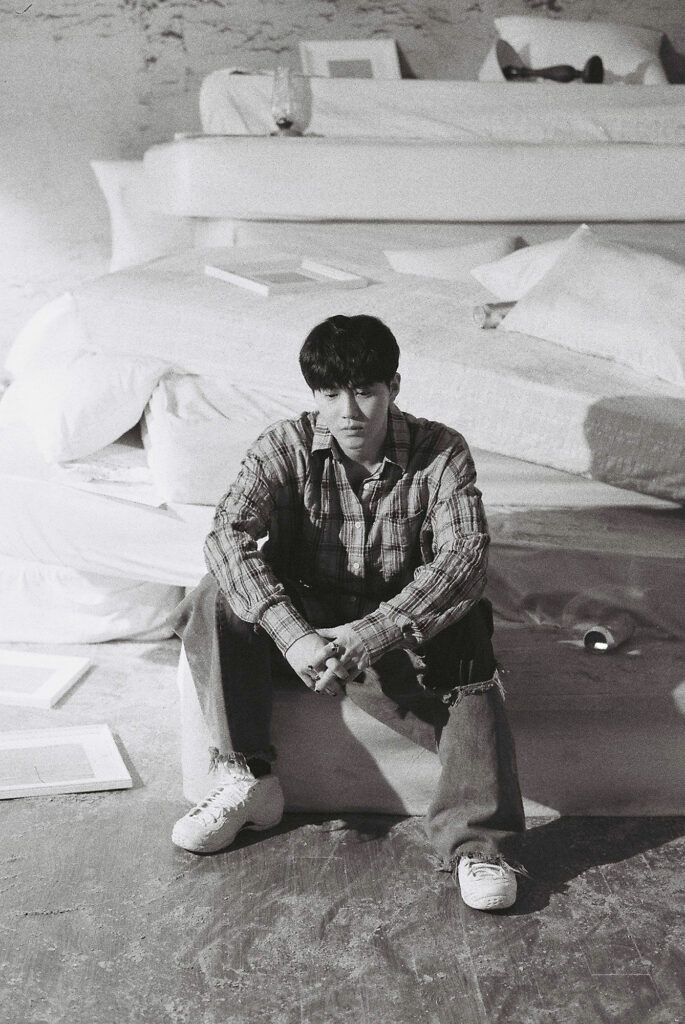
Although the winery might be further down the line, Suho combined this new love with his other love—music. And the commitment to his decanting wine imagery is clear: “already half-filled;” “soaking in this long night;” “You have to inhale endlessly” provide visual frameworks for the song’s story. Sparse lines that cut to the heart build tension such as “The more I swallow, the more thirsty I get / I have to drink endlessly.” The chorus—”falling for you”—and its melody furthers the decanting image, wrapping listeners in a world of silky wine sliding against glass.
The emotions found in “Decanting” juxtapose “Bear Hug” in every sense. While the former is a sultry step for Suho, the latter brings Grey Suit one musical bar closer to a wholesome conclusion. Both tracks focus on physical connections, but “Bear Hug” arrives at a resolution unlike “Decanting,” which thrives on the touch that cannot be satisfied.
Additionally, “Bear Hug” separates itself from the other five tracks through its different relationship with time. “Hurdle” fights to move forward against a static surrounding, for example. “Grey Suit” emphasizes a narrative of being caught in the past. However, “Bear Hug” pulls listeners into a place of mind and of certainty that centers the present moment (“right where you are”).
In his songwriting, Suho acknowledges fear, loneliness, tears, the pressures of the outside world, and the internal voices of doubt and criticism. His core message, though, is one of comfort, like when he sings,
Take your time
Come to me slowly
I’ll be here for youCome here into my arms
Suho lends a bear hug—one that lasts as long as it needs to—with no destination but to be in the now.
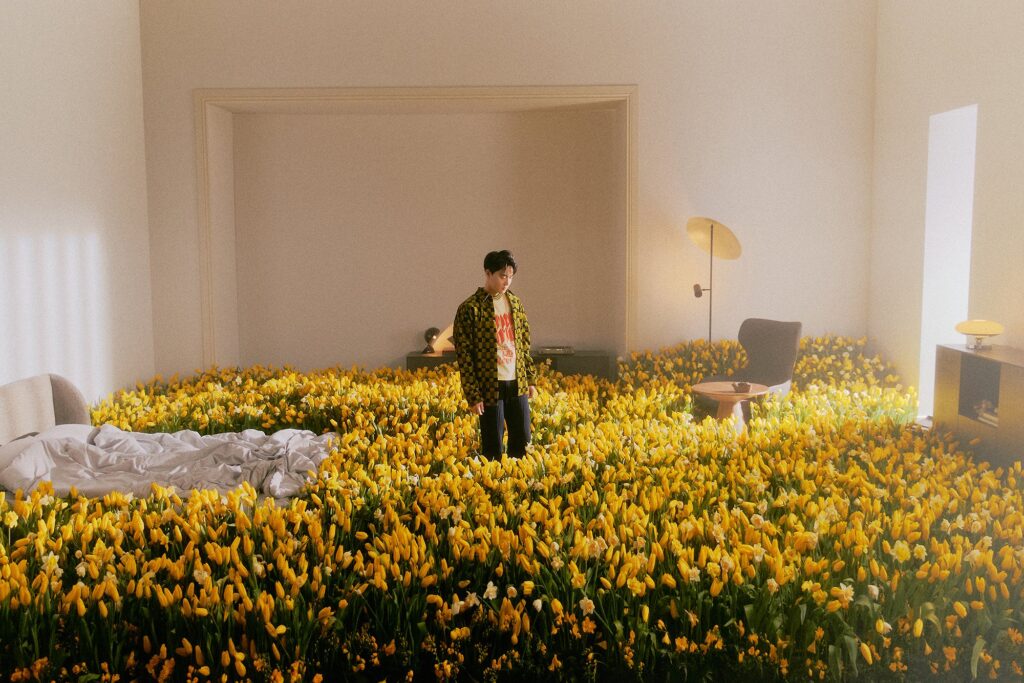
Grey Suit challenges the notion of a “sophomore slump.” The leader of Exo is now very much a solo artist in his own right, as both Self-Portrait and Grey Suit have demonstrated his distinct musical style and his valuable voice. Sophisticated and layered stories revolving around time characterize his second mini album, which hones in on his affinity for the visual arts, along with the written.
Time waits for no one, but Suho revels in the complexity of the concept and the stories that emerge. Only in time, the artist seems to sooth, only in time will we understand a bit more than we did.
(YouTube. Lyrics via Genius [1][2][3][4][5][6]. Images via SM Entertainment.)
